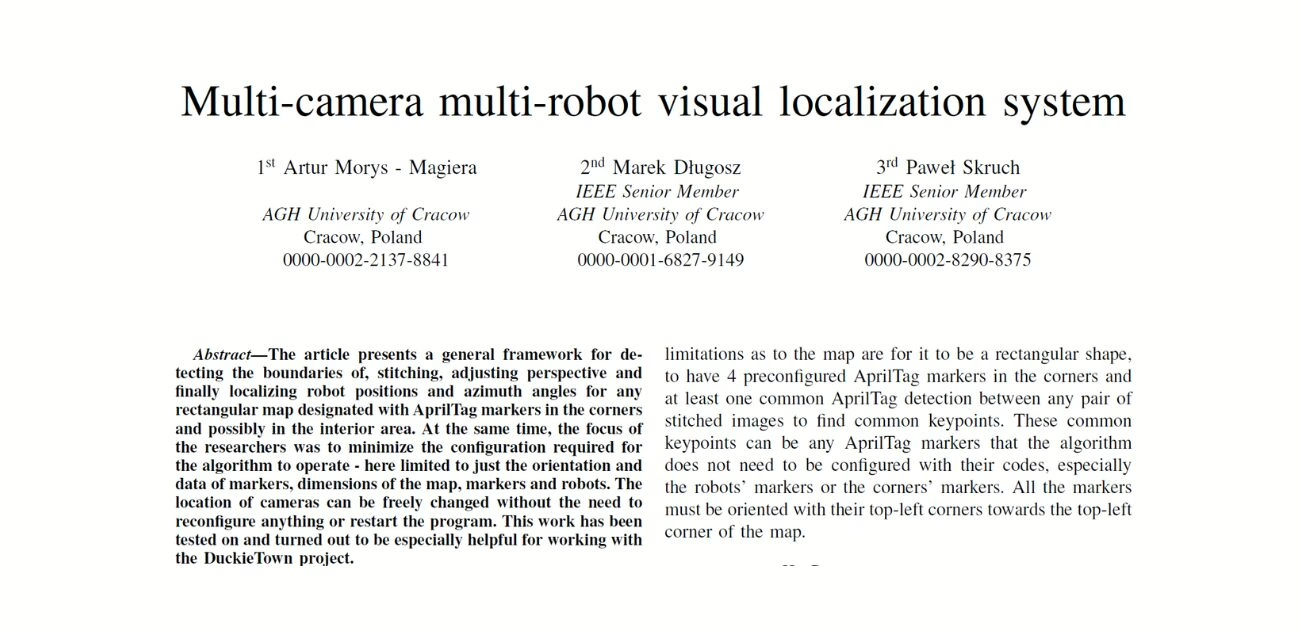General Information
- Title: Multi-camera multi-robot visual localization system
- Authors: Artur Morys Magiera, Marek Długosz, Paweł Skruch.
- Institution: AGH University of Cracow, Poland
- Citation: A. M. Magiera, M. Długosz and P. Skruch, "Multi-camera multi-robot visual localization system," 2024 28th International Conference on Methods and Models in Automation and Robotics (MMAR) , Poland, 2024, pp. 375-380, doi: 10.1109/MMAR62187.2024.10680813.
Visual localization using multi-camera multi-robot system
Visual robot localization is a crucial problem in robotics: how to estimate the agents’ position using vision.
A common approach to solving it is through Simultaneous Localization and Mapping (SLAM) algorithms, using onboard sensors to map and estimate robot positions.
This work introduces a new algorithm for robot localization using AprilTag fiducial markers. It works on a rectangular map with four corner tags, requiring minimal configuration and offering flexibility in camera positions.
Unlike prior methods, this algorithm automatically stitches images from cameras, regardless of angle, and converts them into a top-down view for robot localization.
The approach promises flexibility, making adapting to dynamic camera setups easier without reconfiguration.
This solution offers automated robot localization with minimal setup, leveraging computer vision and AprilTags for more efficient mapping. The only constraint is the rectangular shape of the map and properly oriented corner markers, making it an ideal fit for scalable, adaptive robot environments.
Learn about robot autonomy, including perception, localization, and SLAM, starting from the link below!
Abstract
In the author’s words:
The article presents a general framework for detecting the boundaries of, stitching, adjusting perspective and finally localizing robot positions and azimuth angles for any rectangular map designated with AprilTag markers in the corners and possibly in the interior area.
At the same time, the focus of the researchers was to minimize the configuration required for the algorithm to operate – here limited to just the orientation and data of markers, dimensions of the map, markers and robots.
The location of cameras can be freely changed without the need to reconfigure anything or restart the program. This work has been tested on and turned out to be especially helpful for working with the Duckietown project.
Highlights - Visual localization using multi-camera multi-robot system
Here is a visual tour of the work of the authors. For more details, check out the full paper.
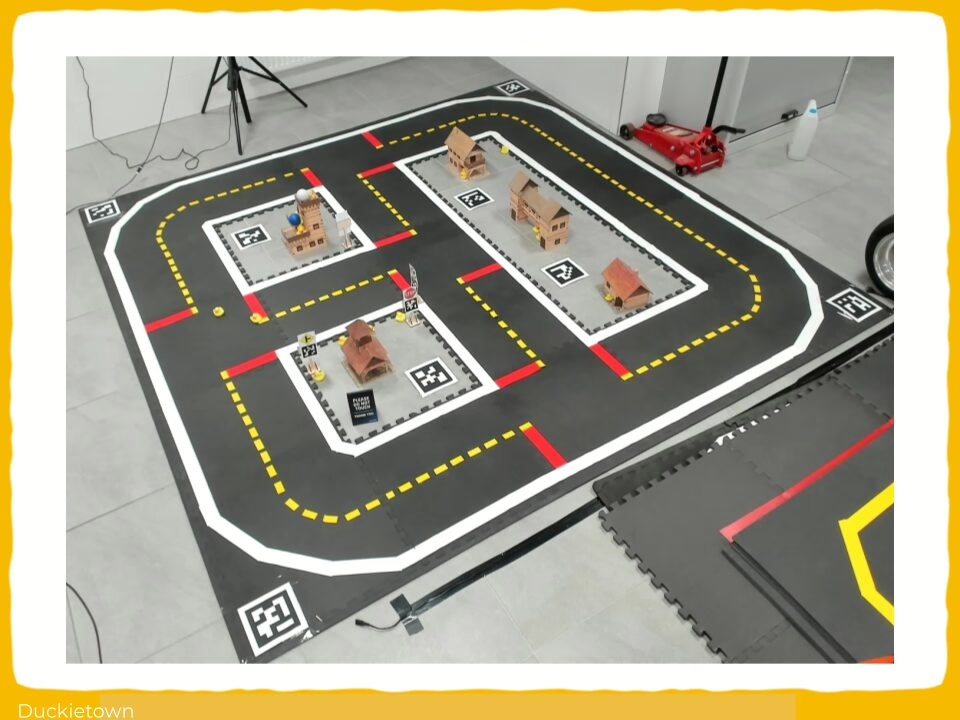
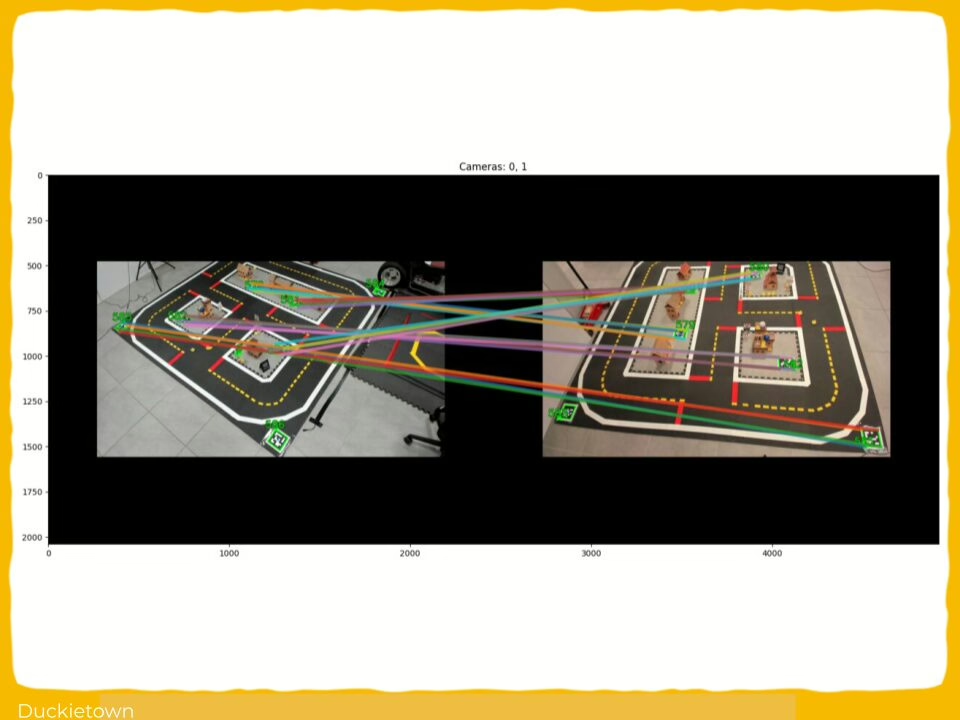
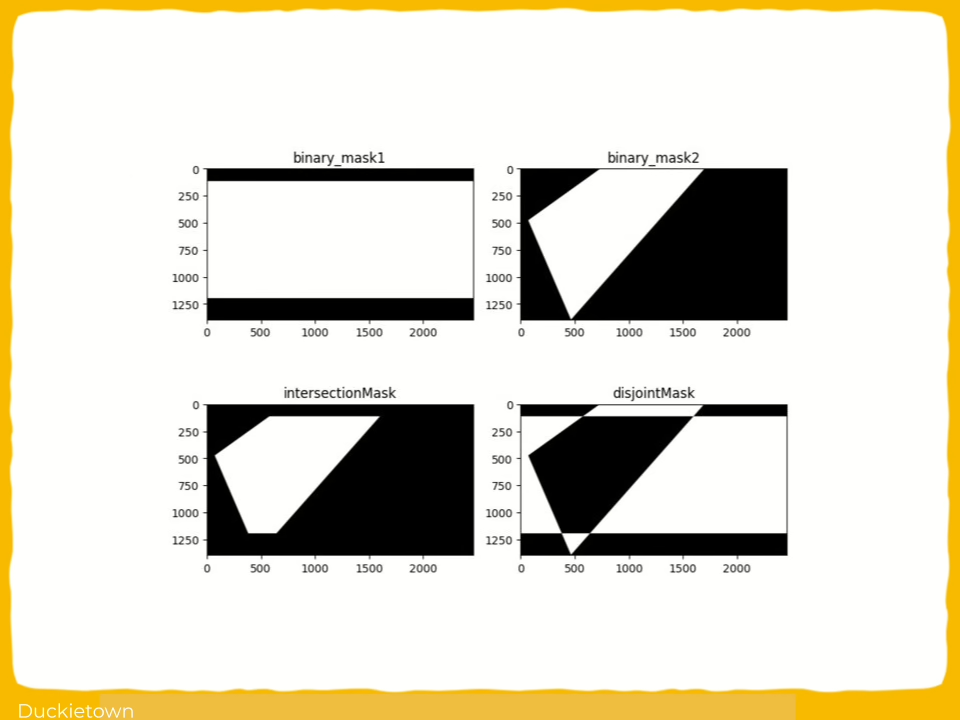
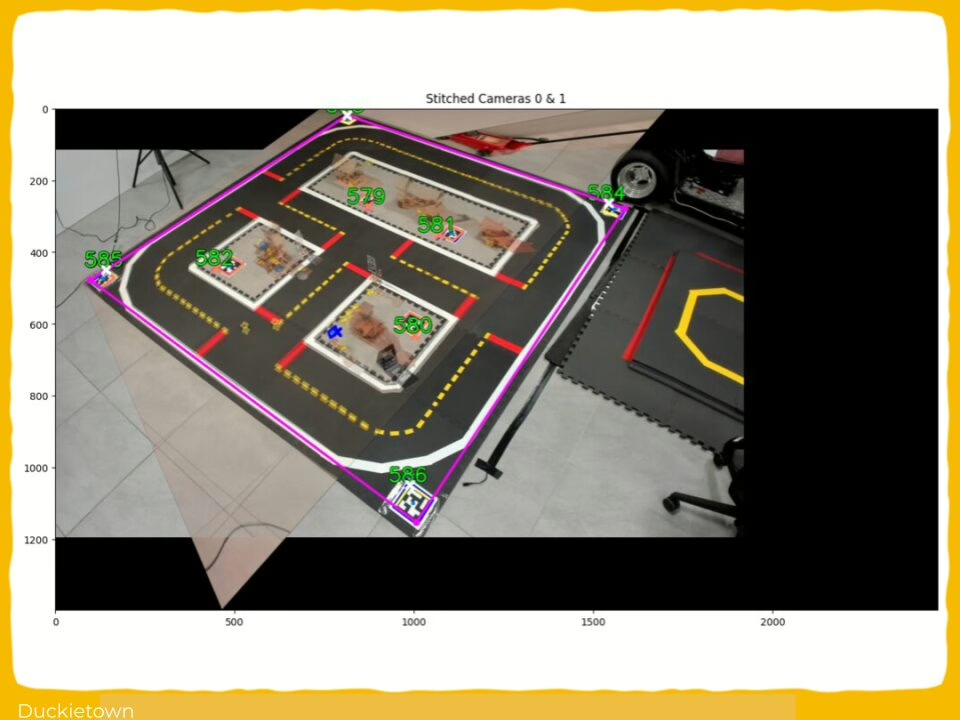
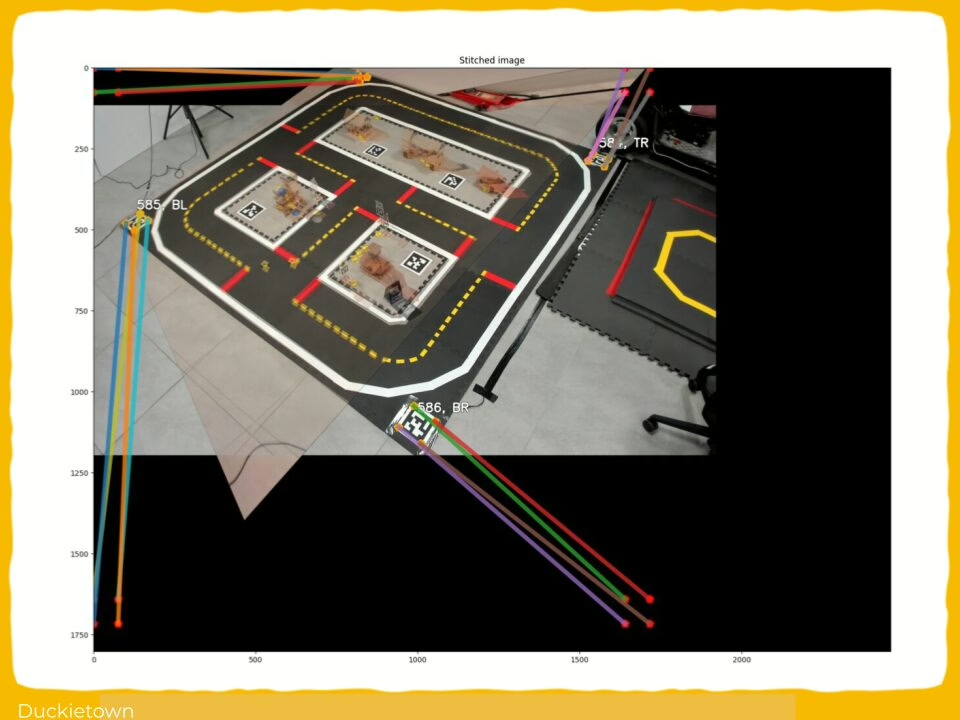
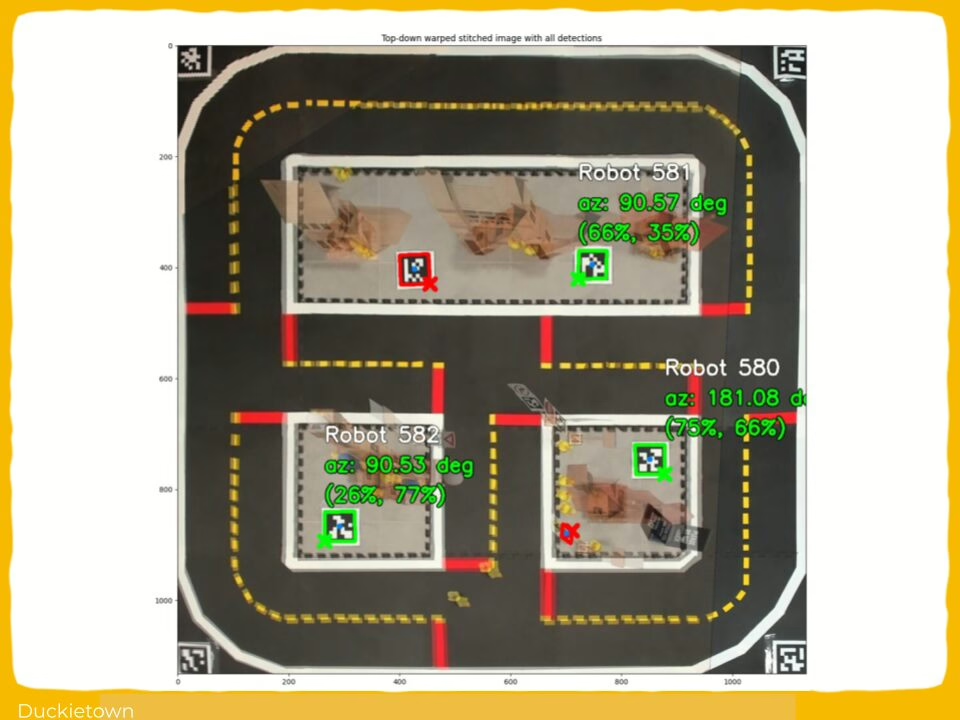
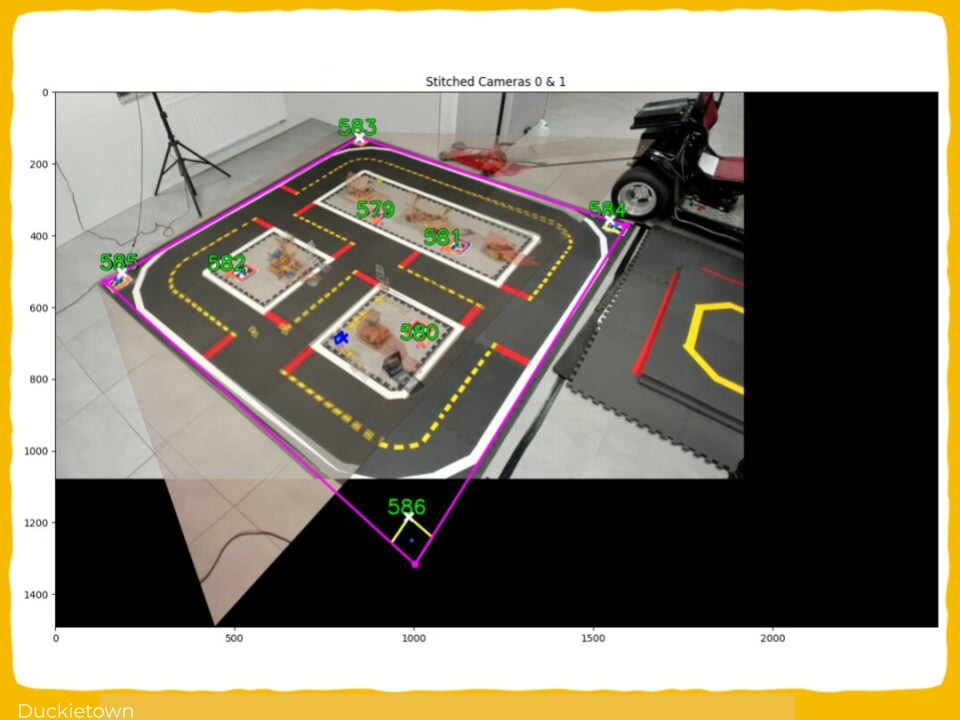

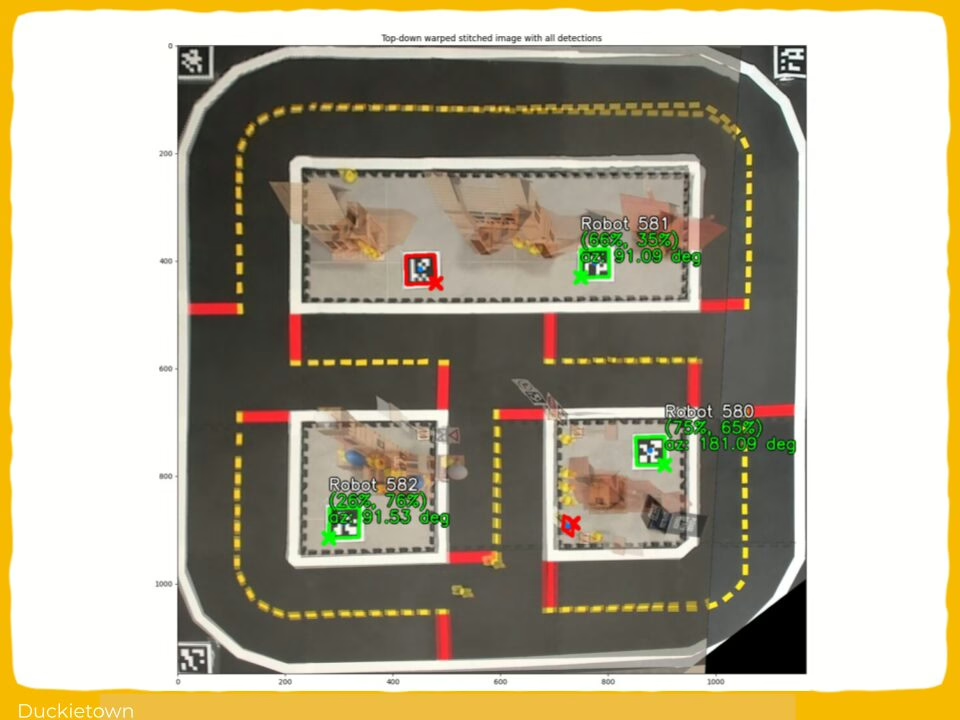
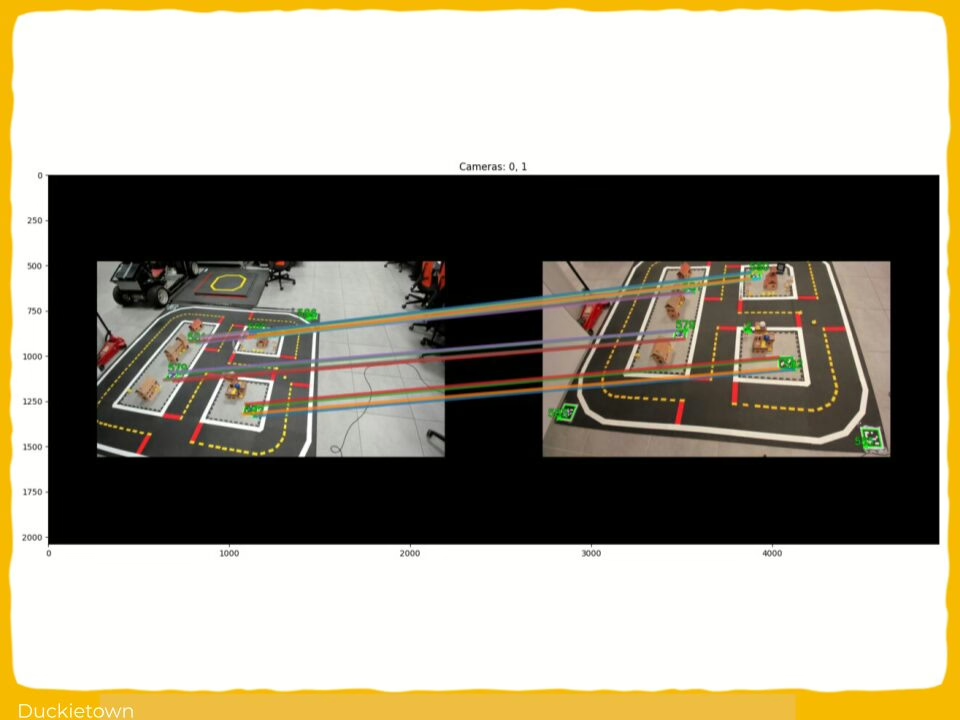
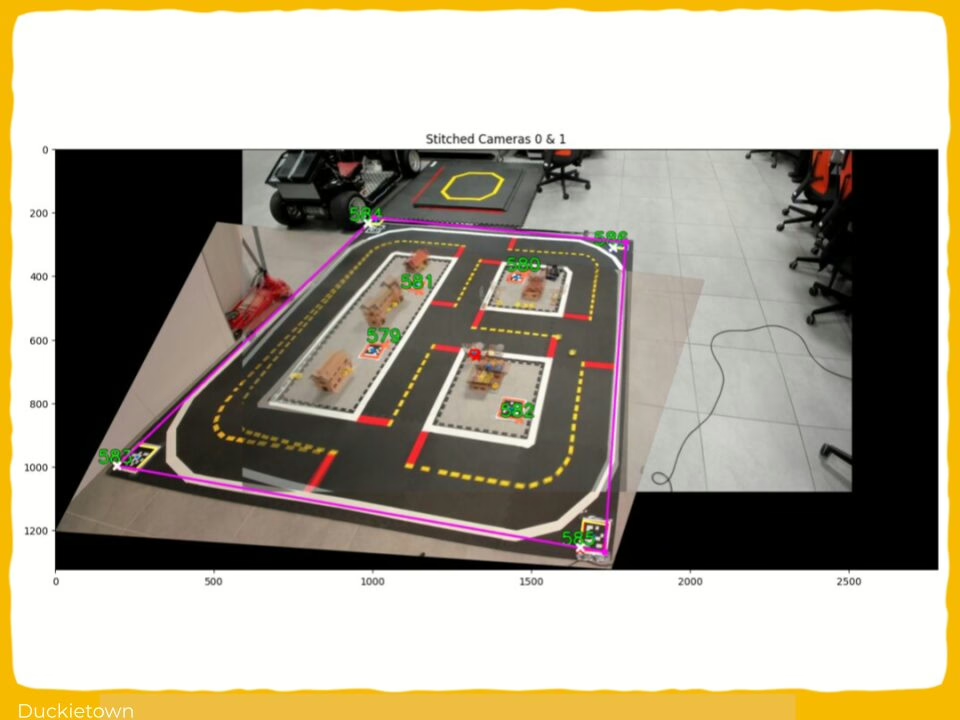
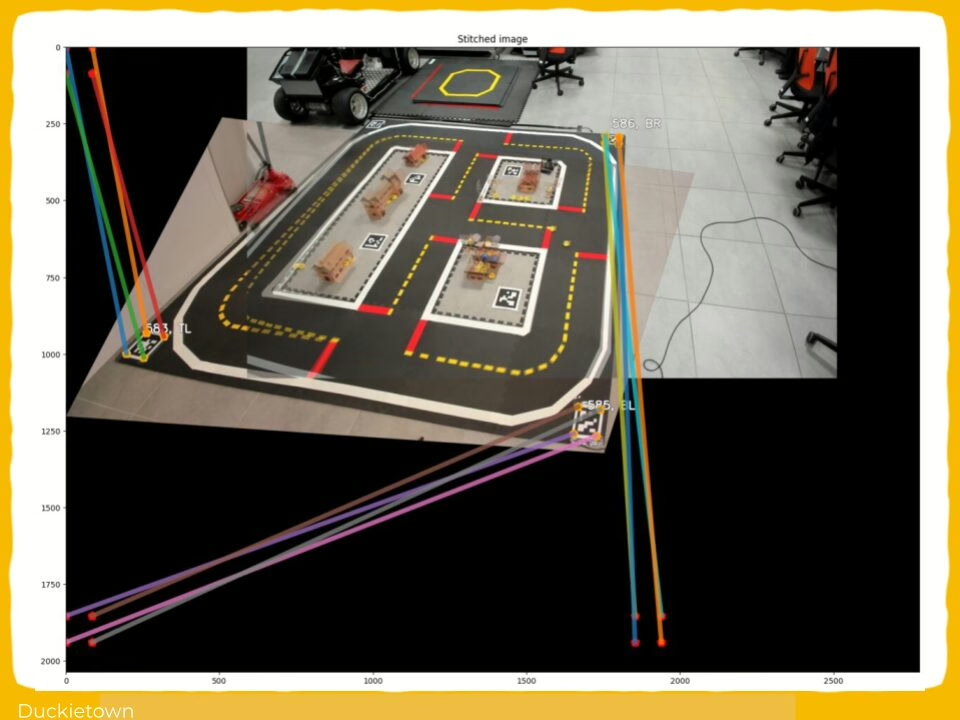
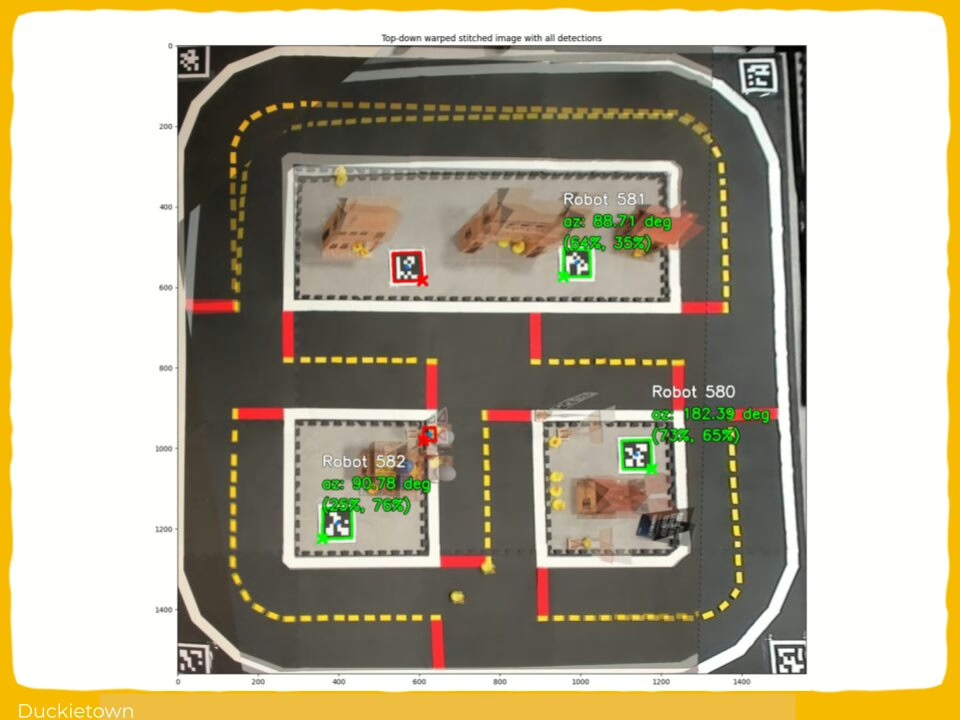
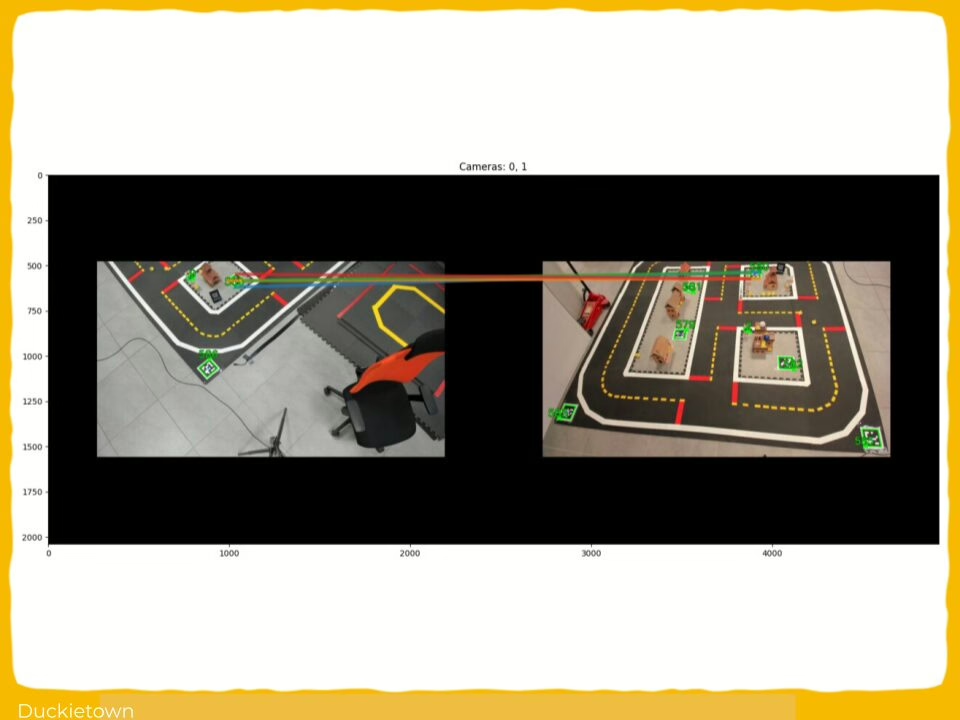
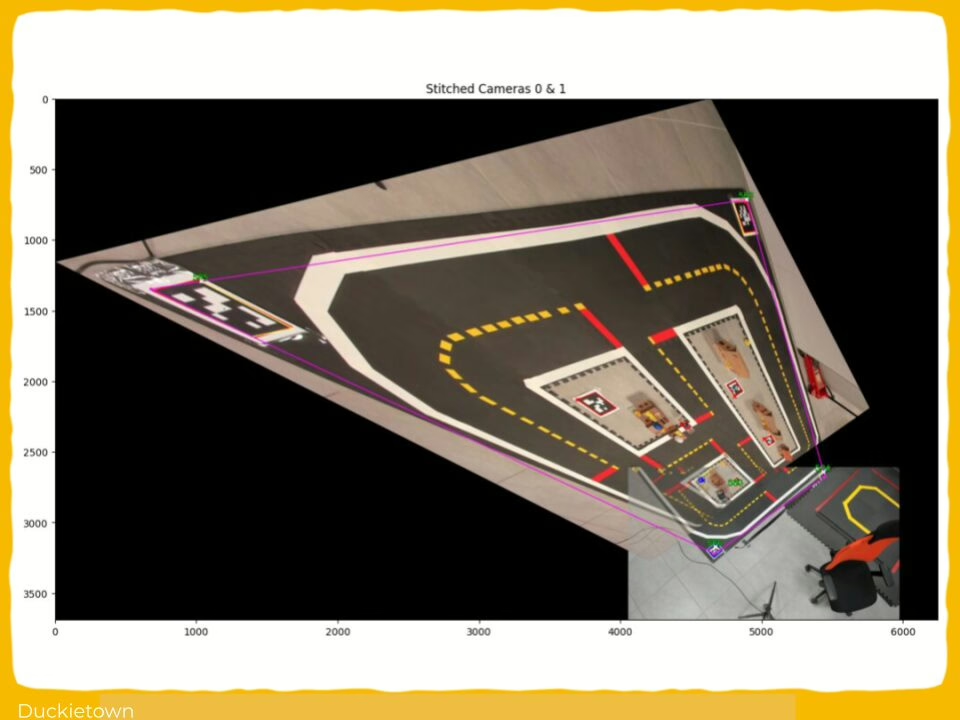
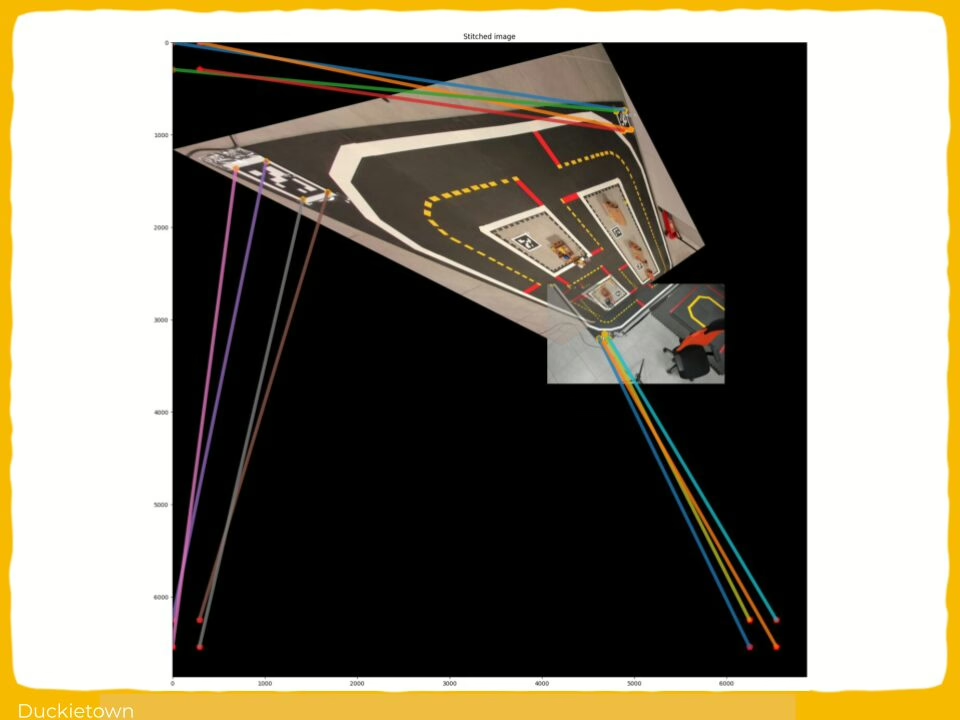

Conclusion - Visual localization using multi-camera multi-robot system
Here are the conclusions from the authors of this paper:
“The primary contribution and aim of this work is to provide a universal framework for stitching views of the same map from multiple cameras that can be freely moved and laid out around the map, with minimal required configuration.
The requirements for placement of codes are also loose: only the orientation with respect to the map frame is constrained and configuration of corner codes is required, as well as the lower limit of visible common markers on two images to be processed is 1, with no need for any corner markers to be present in both images at the same time.
The algorithms efficiency, however, depends on the quality of the homography matrices used in it, which implies that the more detections and corner detections, the better the result. It happens that the stitched / extrapolated coordinates may be off ’ground truth’ in some cases, or even stitching might fail, resulting in malformed output.
The authors provided experiments on two cameras, yet the algorithm may be run sequentially with images from more cameras. The algorithm may be improved in the future by applying more sophisticated methods of aggregating values of multiple detections of a given robot, such as a weighted combination of the position based on the quality of each detection.”
Project Authors
Marek Długosz is a graduate and faculty member of the Faculty of Electrical Engineering, Automatics, Computer Science and Biomedical Engineering at the AGH University of Science and Technology in Krakow, Poland.
Paweł Skruch is a Professor of the AGH University of Science and Technology, Poland.
Learn more
Duckietown is a platform for creating and disseminating robotics and AI learning experiences.
It is modular, customizable and state-of-the-art, and designed to teach, learn, and do research. From exploring the fundamentals of computer science and automation to pushing the boundaries of knowledge, Duckietown evolves with the skills of the user.

